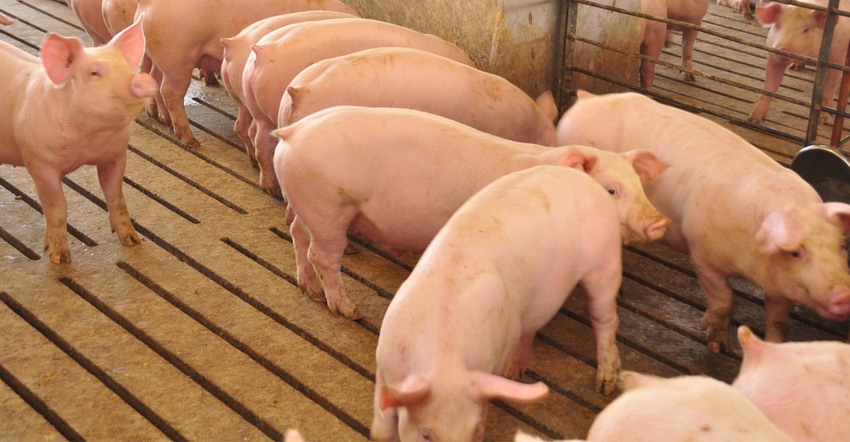January 16, 2019

We spend a lot of time focusing on the market price implications of short-term supply and demand conditions. We have to. If you can’t stay in business in the short run, you won’t be in business in the long run. Still, it’s wise to occasionally step back and take a longer-term perspective, not only where we have been, but also what factors will carry us forward.
Long-term forecasts are important considerations in the timing of decisions on facility improvements, new facility construction or general expansion of the hog operation. For example, producers might strive to plan investment in new facilities or in facility expansion, so the initial new output flow coincides as closely as possible with the price upturn phase of a hog cycle.
Similarly, investment in packing facilities involves long-term commitments of funds. A new packing plant would be expected to have a useful life of decades. Therefore, packers need long-term projections of the relevant variables to evaluate the profitability of a new packing facility.
The packing industry is supply-oriented in the sense that slaughter plants rely on a readily available supply of hogs. If this flow became sharply curtailed for some reason, plant efficiency would immediately decline, and permanent plant closures could result. Long-term supply-and-demand projections are important to packing firms when planning to expand their facilities, or to prospective entrants into the industry.
10-year prospects
USDA provides long-term forecasts for crop and livestock commodities, agricultural trade and aggregate indicators. On Nov. 2, USDA released selected tables prepared for the upcoming USDA Agricultural Projections to 2028 report. The complete report will be released in February.
The report summarizes supply-and-demand flows in supply and utilization tables, often called balance sheets. A balance sheet generally includes supply components as: Beginning stocks + Imports + Production = Total supply. Utilization includes demand components as: Exports + Total domestic use + Ending stocks = Total utilization.
For some commodities, use may be disaggregated into several use categories. For pork, total use is not directly measured and thus is calculated as “Total disappearance” from other balance sheet categories.
The USDA pork balance sheet projects pork total supply for 2019 at 29.434 billion pounds, including beginning stocks of 550 million pounds, total production of 27.824 billion pounds and imports of 1.06 billion pounds. In contrast to grain markets, beginning and ending stocks of pork are minor (2019 beginning stocks would be 1.9% of total supply) because the perishable nature of meat precludes large carryover from year to year. Beginning and ending stocks consist of cold-storage holdings, plus short-term pipeline supplies of pork in wholesale and retail markets.
Pork use in 2019 is estimated as exports of 6.2 billion pounds, total disappearance of 22.649 billion pounds and ending stocks of 585 million pounds. This level of total disappearance is equivalent to domestic per capita pork consumption of 53.1 pounds (retail basis).
10% growth in supply possible
Compared to the projected 2019 pork balance sheet, forecasted 2028 values show beginning stocks up by 18.2%; total production, which includes commercial production plus a minor amount of farm production, up by 9.4%; and imports up by 8.5%, all leading to total supply up 9.5%.
On the demand side, exports are projected up 9.7%, total disappearance up 9.4% and ending stocks up 12.8%. Per capita consumption in 2028 is forecasted to rise to 54.3 pounds, up 1 pound or 2.3% from 2019.
The limited 10-year forecasted rise in per capita consumption is telling. It suggests that growing per capita pork consumption beyond current levels will be very difficult without a dramatic reduction of price. No price collapse is forecasted. However, price levels that would substantially boost per capita consumption would likely not be financially sustainable. What the forecasts imply, and a realistic goal, is holding pork’s share of the domestic protein market relatively steady, while looking for opportunities to grow demand.
Per capita consumption is entirely a supply statistic. It imparts no information about prices, tastes and preferences, and other factors that ultimately determine how much pork individual consumers will choose to buy and consume. Demand, on the other hand, effectively refers to the quantity of pork consumers will purchase at a given price, with all other factors held constant. Demand strength reflects consumer valuation of pork, which underlies total dollars available for the industry and drives prices and profitability for all sectors in the industry.
Continued growth in export market
Active export market development has permitted pork producers to boost production at a faster rate than domestic consumption. That trend will likely continue.
Further trade liberalization of key customary and emerging markets would benefit not only the U.S. pork industry, but also export competitors. Expect export markets to be strongly contested in the future years. Competition will be intense in both quality and price. The U.S. remains a leader in both of these elements. Shocks such as disease outbreaks and trade disputes will add volatility to the export component of demand.
Balance sheet estimates change. Balance sheet projections and forecasts are revised regularly to reflect new information and changing market conditions. Of course, supply or demand shocks such as major drought impacts, disease outbreaks or other factors may appear unexpectedly at any time. Pork exports and imports are particularly difficult to forecast given the volatility and uncertainty of the current global political and market situation.
Schulz is the ISU Extension livestock economist. Contact him at [email protected].
About the Author(s)
You May Also Like






